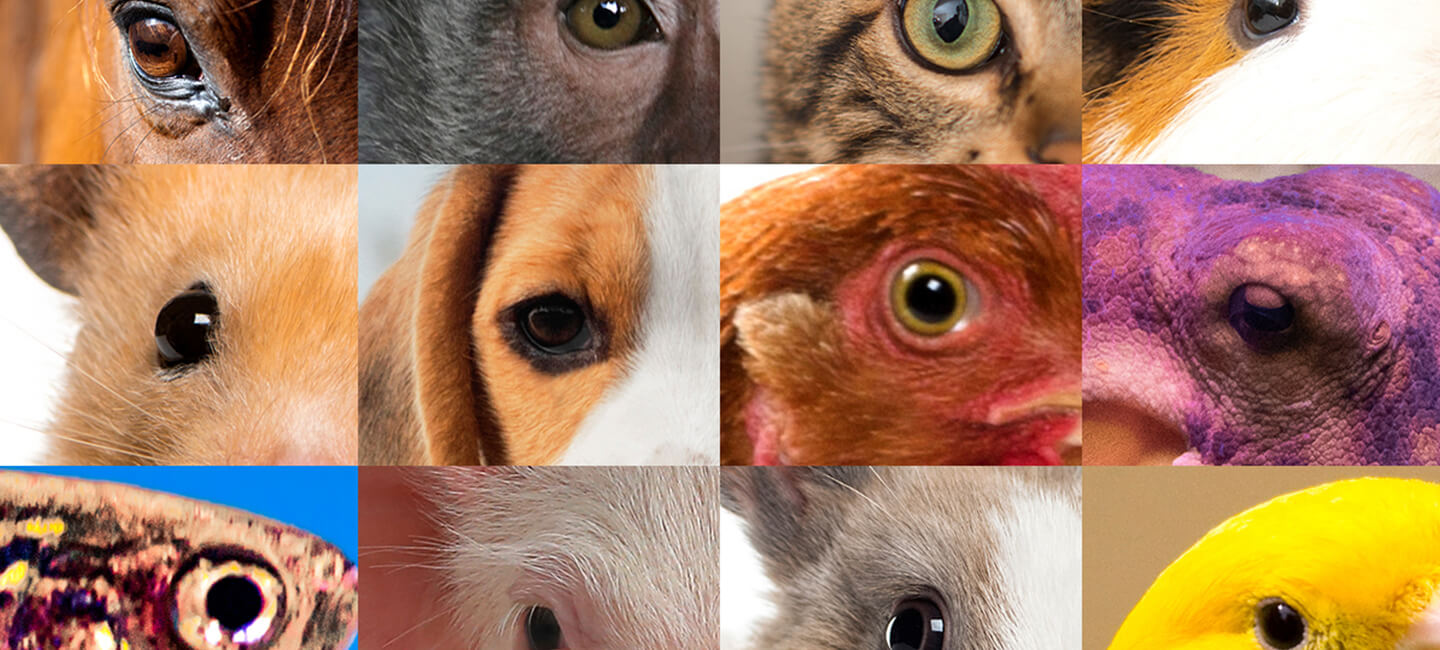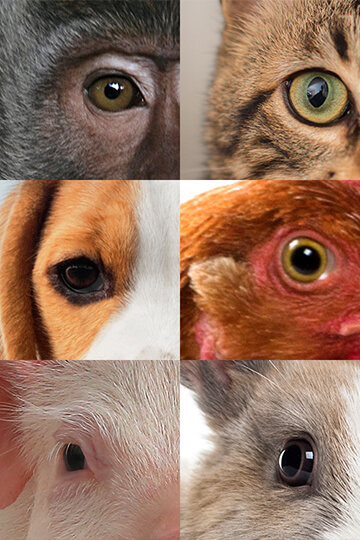

Still more than 2,000,000 animals used in experiments: One Voice analyses the data for 2023
Bad habits die hard: once again, the publication of animal testing statistics was long overdue. We’ve had to wait until 14 April 2025 for the Ministry to send us the files for 2023, before they were officially posted online two days later…
Unfortunately, the situation remains unchanged: the threshold of 2 million animals used has once again been crossed. Although there was a decrease of 81,304 individuals in 2023, it is so small that there is little cause for celebration.
Behind this apparent stability lies a much more worrying situation: a persistent lack of transparency, unjustified reuse, avoidable suffering… On the eve of World Day for Animals in Laboratories, with around twenty awareness-raising events organised by the association throughout France, One Voice analyses the figures.
A symbolic bar that shows no sign of falling
For more than a decade, the number of animals used each year in French laboratories has stagnated at around 2 million.
In 2023, 2,046,754 individuals were subjected to experiments.
Fundamental research remains the main area concerned, with 629,007 uses, followed by the maintenance of genetically modified lines (491,778), regulatory testing (449,740), applied research (390,046), conservation activities (50,445) and training (35,738).
The figures for primates are presented in a specific focus.
A surge in the number of animals for genetically modified lines
One figure stands out: the number for maintenance of genetically modified lines which more than doubled in one year, from 225,435 in 2022 to 491,778 in 2023. This now represents 24% of the total number of animals used. This spectacular increase shows not only the scale of this practice, but also the slow reflection of reality in official data.
This increase stems from the application of a new European guide making it compulsory to report practices that were not previously recorded in our country (a notable difference from our neighbours, which we had already denounced), such as tail or paw amputations. Originally scheduled for 2021, the French implementation was delayed.
This statistical correction reveals a reality that has been ignored for years: hundreds of thousands of animals were subjected to these practices in the shadows. France is lagging far behind on this issue, since the European Commission’s “implementing decision” making reporting mandatory dates back to 2020 and should have been implemented in 2021.
Mice in the front line
Of the animals used, 1,387,275 are mice, representing well over half:
- 138,848 underwent procedures classified as severe
- 525,189 underwent experiments classified as moderate
Some of these ‘moderate’ practices include the implantation of intracranial devices or the induction of cancer, which raises questions about the classification of levels of suffering which are generally underestimated.
Mice also represent the majority of animals used to maintain genetically modified lines (470,114 out of 491,778, or 95.5%), alongside dogs, rats and zebrafish.
Dogs: a worrying increase and grey areas
The number of dogs used rose from 3,961 to 4,107 in 2023.
- Only 1,788 came from EU-approved breeding facilities
- 819 were born outside the EU, with no clear traceability
- 1,487 were reused, with no data available
Our investigations into French breeding farms, particularly in Mézilles (Yonne) and Gannat (Allier), reveal appalling living conditions, even within France.
In addition, 2,555 dogs were used in toxicity tests or drug production.
Rabbits: ongoing suffering despite recognised alternatives
Rabbits are the second most commonly used species in experimentation, accounting for around 9% of animals.
In 2023:
- 5,161 underwent the pyrogenicity test, designed to detect the presence of bacteria via a painful injection.
- 70 were exposed to the Draize test, in which irritants are applied to the eyes.
These tests are extremely painful and outdated, especially since alternative methods have been recognised for years (and the Council of Europe supports the discontinuation of the pyrogenicity test).
The Monocyte Activation Test (MAT), for example, measures inflammatory responses using human cells in culture, without the use of animals. Validated by the EMA since 2010, this method remains underused.
Less severe suffering, really?
On the surface, there appears to be progress: procedures classified as severe have fallen from 244,710 in 2022 to 191,046 in 2023, representing 9% of the total.
However, when moderate and severe procedures are combined, the number of animals involved still exceeds one million (1,006,458).
The “moderate” classification seems to be becoming a catch-all, with the risk of masking the real severity of certain practices.
One Voice continues to request non-technical summaries of approved projects to enable independent and transparent verification.
Behind a deceptive numerical stability, and even though the trend should be towards a decline in order to meet the criteria of the European directive, the 2023 figures confirm worrying trends:
- An increase in the use of dogs
- A surge in the number of animals for modified lines
- The continuation of obsolete and painful tests despite reliable, animal-free alternatives
France remains behind in terms of transparency and the transition to more ethical methods, even though three quarters of French people are in favour of ending animal testing (One Voice/Ipsos, April 2023).
The fight continues. One Voice is calling for an immediate change of course towards cruelty-free science. Support us by signing our petitions!